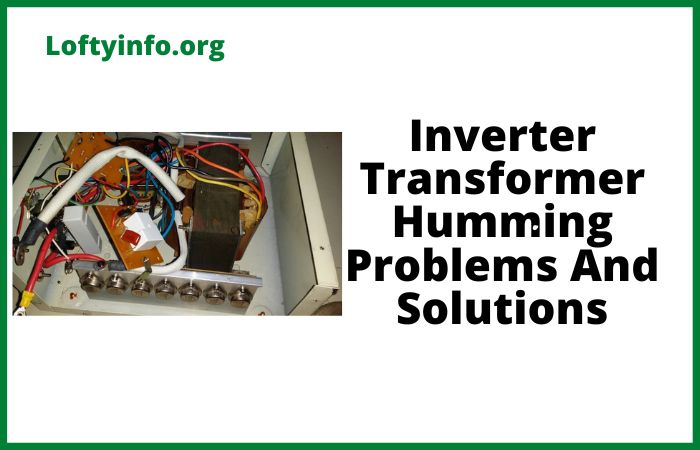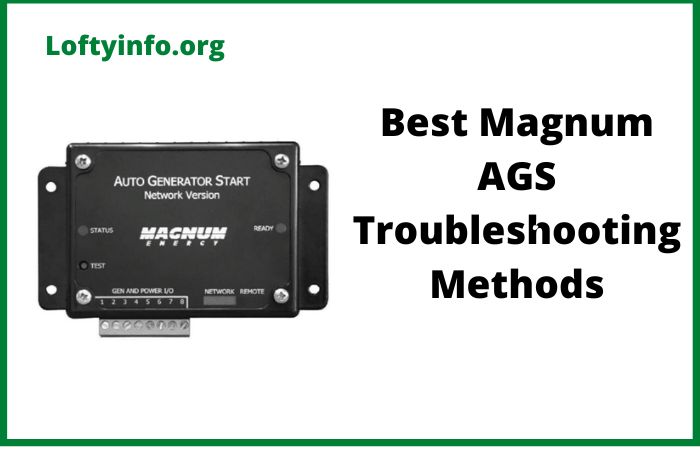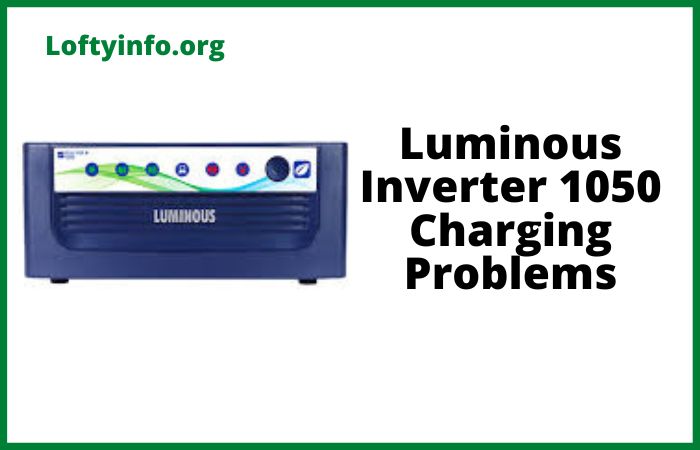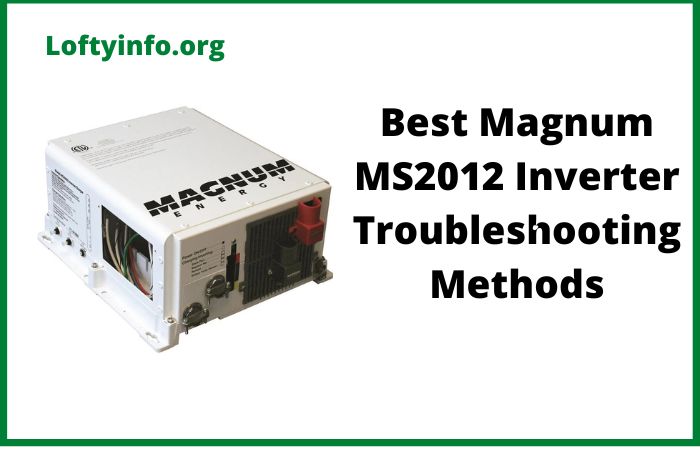Luminous Zelio 1100 Troubleshooting For Common Issues
Power outages are an unfortunate reality in many parts of the world and having a reliable inverter can make all the difference in maintaining normalcy during blackouts.
The Luminous Zelio 1100 is a popular pure sine wave inverter that has earned its reputation for providing dependable backup power to homes and small offices.
Like any electronic device, it can occasionally experience issues that affect its performance.
Understanding how to identify and resolve these problems can save you time, money and the frustration of unexpected power failures.
This comprehensive guide will walk you through the most common problems users encounter with their inverter and provide practical solutions to get your backup power system running smoothly again.
Whether you’re dealing with charging issues, alarm sounds or complete system failures, this article covers everything you need to know about Luminous Zelio 1100 troubleshooting.
Luminous Zelio 1100 Troubleshooting For Common Issues
1) Battery Not Charging or Slow Charging
One of the most frequent complaints from inverter users involves charging problems.
If you notice that your battery isn’t charging at all or is charging extremely slowly, several factors could be responsible.
Start by checking the mains power supply.
Ensure that the wall socket is functioning correctly by testing it with another device.
Verify that the input power cable connecting the inverter to the mains is properly plugged in at both ends and shows no signs of damage.
Loose connections are often the culprit behind charging failures.
Next, examine the battery terminals.
Over time, corrosion can build up on battery terminals, creating resistance that prevents proper charging.
Disconnect the battery cables and clean the terminals thoroughly using a wire brush and a mixture of baking soda and water.
Dry them completely before reconnecting.
Ensure the connections are tight and secure.
Check your inverter settings as well.
Some models have selectable battery types and if the setting doesn’t match your actual battery, charging efficiency will suffer.
Verify that the battery type setting corresponds to the battery you’re using.
If the battery itself is old, it may have reached the end of its serviceable life.
Most inverter batteries last between three to five years depending on usage and maintenance.
A battery that has degraded significantly will struggle to accept or hold a charge.
You can test this by measuring the battery voltage with a multimeter.
A fully charged 12V battery should read around 12.6 to 13 volts when not connected to a load.
2) Inverter Not Turning On
When your inverter refuses to power up, it creates an immediate concern, especially during a power outage.
This issue requires systematic troubleshooting to identify the root cause.
Begin by checking the main power switch on the inverter.
It sounds simple but sometimes the switch can be accidentally turned off.
Ensure it’s in the ON position.
Also, check if there’s a separate battery isolator switch that might be turned off.
Examine the input fuse or MCB (Miniature Circuit Breaker).
The Zelio 1100 has protective fuses that blow when there’s a surge or short circuit.
Locate the fuse holder, remove the fuse and inspect it visually.
A blown fuse will have a broken filament visible through the glass.
Replace it with a fuse of the same rating if it’s damaged.
Never use a higher-rated fuse as this can damage your inverter.
Low battery voltage is another common reason for the inverter not starting.
If your battery has discharged below the minimum threshold, the inverter’s protection circuit prevents it from operating to avoid damaging the battery further.
Charge the battery fully using mains power and then attempt to turn on the inverter again.
Internal component failure could also be the issue.
If you’ve checked all external factors and the inverter still won’t start, there may be a problem with the internal circuit board or other electronic components.
In such cases, professional repair service is necessary.
3) Continuous Beeping or Alarm Sounds
Alarm sounds from your inverter are not nuisances but communication tools.
The Zelio 1100 uses different beeping patterns to alert you to specific conditions.
A continuous beeping sound typically indicates battery low voltage.
When the battery charge drops below a certain level, the inverter sounds an alarm to warn you that backup time is running out.
The solution here is to either reduce your load or allow the battery to charge when mains power returns.
If you hear beeping when mains power is available, it might indicate a charging problem. Refer back to the battery charging troubleshooting steps mentioned earlier.
Overload conditions also trigger alarms.
If you’ve connected appliances that collectively draw more power than the inverter’s rated capacity of 1100 VA, the inverter will beep and may shut down to protect itself.
Calculate the total wattage of all connected devices and ensure they don’t exceed approximately 900 watts to allow for power factor and surge requirements.
Disconnect high-power appliances like air conditioners, water heaters or washing machines.
Short circuit detection is another cause of alarm beeping.
If there’s a short circuit in your home wiring or in one of the connected appliances, the inverter will detect it and sound an alarm.
Disconnect all loads and reconnect them one by one to identify the problematic device or circuit.
4) Inverter Switching Off Automatically
Unexpected shutdowns are frustrating, particularly when you need backup power most.
Several conditions can cause your inverter to turn off automatically.
Overload protection is the most common trigger.
As mentioned earlier, exceeding the inverter’s capacity causes it to shut down.
This is a safety feature preventing damage to the inverter.
Always ensure your load stays within the recommended limits.
Overheating can also cause automatic shutdown.
Inverters generate heat during operation, and they’re designed to shut down if internal temperatures exceed safe levels.
Ensure your inverter is installed in a well-ventilated area with at least 6 inches of clearance on all sides.
Keep it away from direct sunlight and heat sources.
Clean any dust accumulation on ventilation grills regularly.
Battery over-discharge protection is another built-in safety feature.
When the battery voltage drops too low, the inverter cuts off power supply to prevent permanent battery damage.
This is normal behavior and the inverter will resume operation once the battery is adequately charged.
Loose connections can cause intermittent shutdowns.
Check all wiring connections, especially the battery terminals, input power connections and output connections.
Tighten any loose connections you find.
5) Battery Backup Time Reduced
If you notice that your inverter provides significantly less backup time than it used to, several factors might be at play.
Battery degradation is the primary cause of reduced backup time.
As batteries age, their capacity diminishes.
A battery that once provided four hours of backup might only deliver two hours after several years of use.
Testing the battery with a load test or hydrometer for tubular batteries can confirm if the battery needs replacement.
Increased power consumption in your home could also be responsible.
If you’ve added new appliances or devices to your backup circuit, they’ll drain the battery faster.
Review what’s connected to the inverter and determine if recent additions are causing the reduced runtime.
Improper charging cycles affect battery health.
If the battery frequently doesn’t get fully charged before the next power cut, it develops a memory effect and loses capacity over time.
Ensure the battery receives complete charging cycles regularly.
Electrolyte levels in tubular batteries need periodic checking.
Low electrolyte levels reduce battery capacity and performance.
Top up with distilled water as needed, ensuring the plates are covered but not overfilled.
6) Display Panel Not Working
The display panel provides crucial information about your inverter’s status.
When it stops working, you lose visibility into the system’s operation.
First, check if the inverter itself is receiving power.
Sometimes the main unit functions fine, but the display panel doesn’t light up due to a loose connection or internal issue.
Verify that the mains input is present and the battery is connected.
Loose internal connections between the display panel and the main circuit board can cause display failures.
This typically requires opening the inverter case, which should only be done by qualified technicians to avoid warranty issues and safety risks.
Display panel LEDs have a limited lifespan.
If your inverter is several years old, the LED indicators might have failed.
Professional replacement of the display module may be necessary.
Sometimes, the display might be functional but dim.
This can happen due to aging components or power supply issues to the display circuit.
Adjusting ambient lighting or viewing the display from different angles might reveal faint indicators that suggest the display is partially working.
7) Output Voltage Problems
Voltage irregularities in the inverter output can damage sensitive electronics and affect appliance performance.
If you’re experiencing low output voltage, first verify that the battery is fully charged.
A weak battery cannot provide sufficient power for the inverter to maintain proper output voltage.
Use a multimeter to measure the battery voltage and ensure it’s within the normal range.
Connection resistance can cause voltage drops.
Check all wiring from the battery to the inverter and from the inverter to your distribution panel.
Undersized wires or poor connections create resistance that reduces available voltage at the output.
Ensure proper gauge wiring is used according to the manufacturer’s specifications.
High output voltage, though less common, can occur due to incorrect battery voltage settings or internal calibration issues.
This requires professional attention as it involves adjusting internal parameters.
If the output voltage fluctuates significantly, it might indicate failing inverter components or unstable input power affecting the charging circuit.
Such issues typically need expert diagnosis and repair.
Preventive Maintenance Tips
While troubleshooting helps resolve existing problems, preventive maintenance keeps issues from developing in the first place.
Regular battery maintenance is crucial. For tubular batteries, check electrolyte levels monthly and top up with distilled water as needed.
Clean battery terminals every few months to prevent corrosion. Keep the battery area clean and dry.
Perform periodic load testing to ensure your inverter and battery system can handle your power requirements.
This helps identify capacity degradation before it becomes critical.
Keep the inverter clean and dust-free.
Dust accumulation on cooling vents reduces heat dissipation efficiency, potentially causing overheating issues.
Use a soft brush or compressed air to clean ventilation areas.
Avoid deep discharge cycles whenever possible.
While the inverter has protection circuits, frequently draining the battery to extremely low levels accelerates wear and reduces lifespan.
Monitor your inverter’s performance regularly.
Pay attention to charging times, backup duration, and any unusual sounds or behaviors.
Early detection of minor issues prevents them from becoming major problems.
Conclusion
Effective Luminous Zelio 1100 troubleshooting empowers you to maintain reliable backup power for your home or office.
Most common issues have straightforward solutions that don’t require professional intervention.
By understanding how to diagnose charging problems, address alarm conditions, manage load requirements and maintain your battery properly, you can maximize your inverter’s performance and lifespan.
Recognizing when professional help is needed.
Issues involving internal electronics, complex circuit problems or situations where you’re unsure about the cause should be handled by qualified service technicians.
Regular maintenance combined with prompt attention to problems ensures your inverter remains a dependable power backup solution for years to come.






